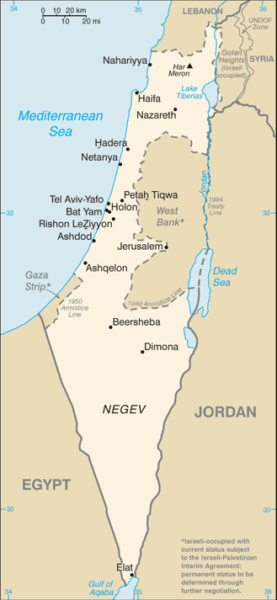CDR Salamander on the terrorist attacks this weekend that inflicted casualties on Israel proportionally nearly ten times the 9/11 attacks on the United States:
“Terrorists” is perhaps too much of an honorable word to describe the death squads that set out from the Gaza Strip this weekend hunting civilians.
I started to do this post about the failure of intelligence, imagination, and the seduction of modernism to see the nature of man — and perhaps that will be my post for tomorrow — but I want to make sure we establish an understanding, a baseline, to what has happened.
[…]
We are already seeing in the West the useful idiots in the externalized self-loathing left, and the imported Jew hatred already his the streets in support of death squads, rape, and the kidnapping of women and children.
We have also seen the defenders of the fruit of faculty-lounge-foreign-policy that we’ll discuss in Part II start to tut-tut Israel’s budding response and what “smart policy” recommendations they have on offer to layer on top of their already failed world view’s prior policy recommendations that got us here — but again, I’m getting ahead of myself, we’ll get to that tomorrow.
Today we need to make sure we have our mind right.
Considering America’s vast population and geography, we may not really understand the scale. There is also so much coming out of Israel, it is hard to focus, so I’ll pick just one event and two families to set the mind, then we’re going to help establish a perspective in a broader context.
One part of the attack that sticks in most people’s mind is the attack on the music festival. Exceptional reporting from Liel Liebovitz at Tablet;
I’ve spent the last 12 hours speaking to Israelis who were at the Supernova music festival. Their testimonies, as you would imagine, are very emotional. At least one broke down mid-conversation and wasn’t able to continue his recollection.
The attack on the festival outside of Re’im began around 7 a.m. The party was at its peak by then — which meant that by then most people were inebriated. At first, partygoers heard a loud explosion, which they took to be another sporadic rocket attack on southern Israel. But then the explosions grew louder and constant, and kept going for about five minutes. The music stopped, and the police protecting the 4,000 or 5,000 ravers began pushing everyone to leave.
As is always helpful in such situations, we should go to the map.
Re’im. It is just 3.5 miles as the rocket flies from the Gaza border. The difference is so stark, all you need is an overhead;
That isn’t a difference in soil or terrain. That is simply culture based on a dividing line put on a map 73 years ago, back when the Gaza Strip had a population of about 120,000. Today, it has a population of about 2.3 million.
Problems do not get better with time.
By then, the terrorists were approaching in pickup trucks bearing Hamas military markings.
Shooting began. Many were executed on the spot. 260 bodies have been found, so far, on the site of the rave.
Many of the young men and women started running in the flat expanse of the western Negev desert. Faced with the spectacle of kids fleeing for their lives on a largely flat surface, the terrorists began rounding up the rest of their victims.
Others were captured and bound and kidnapped. “I saw videos with a male getting held by a group of Arab kids. Like, they’re like 16, 17,” one survivor recalled. “They’re kids, but they’re they’re young men already, and they’re holding this guy, and he looks as his girlfriend is being mounted on a bike and driven away from him. God knows what she’s going to experience … Women have been raped at the area of the rave next to their friends bodies, dead bodies.”
Her name is Noa Argamani, 25. A little younger than my oldest daughter
You can see the video here, but I think her face captures well the moment history returned to Israel.








